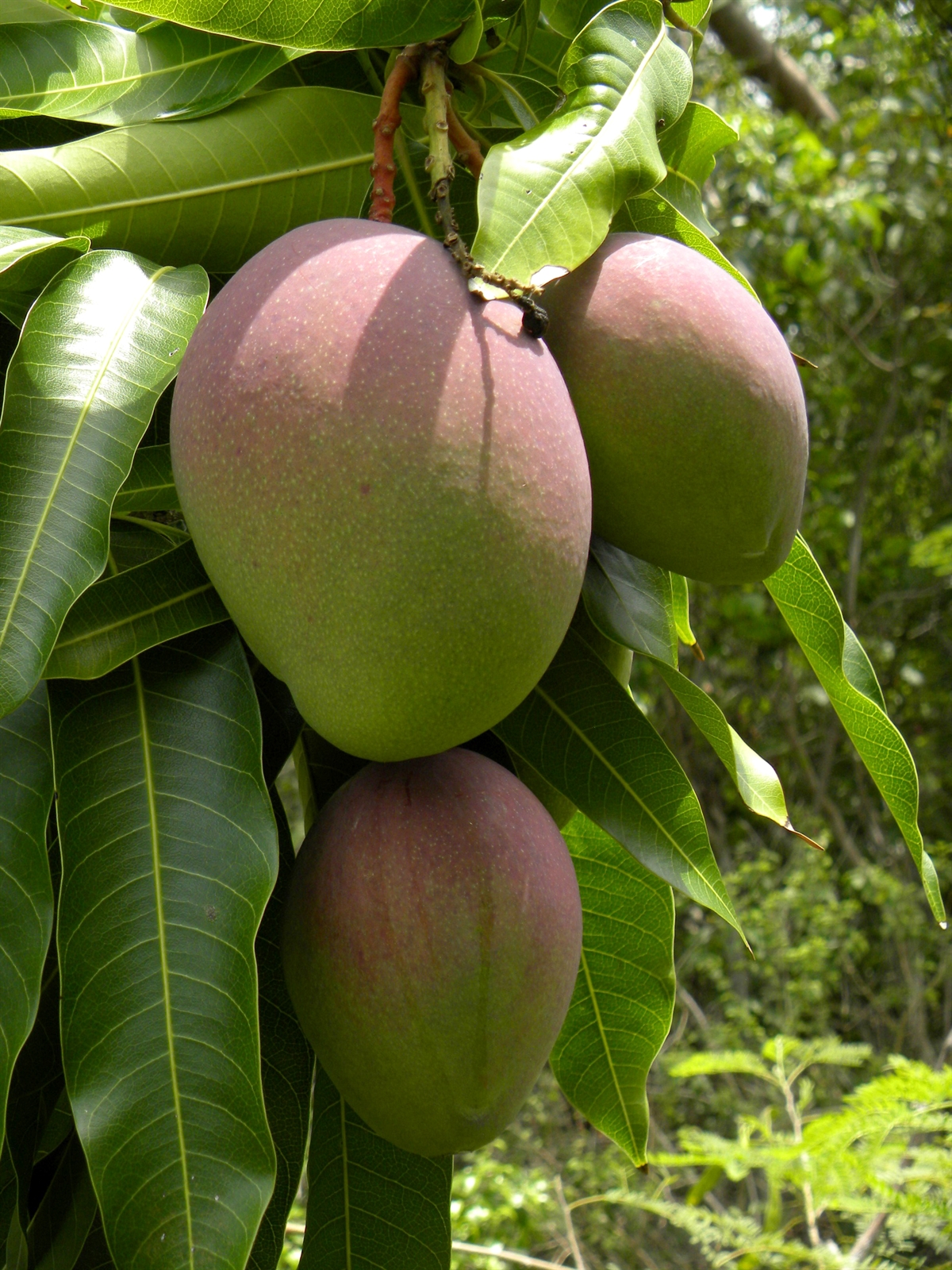Habit: Mangifera indica grows as a tree to 20 meters in height with a diameter to 1 meter. The leaves are arranged alternately and are up to 25 cm in length and 10 cm wide. The leaves are glabrous with an acute leaf apex and an entire margin.
The complete, perfect, actinomorphic flowers are arranged in panicles. Each flower is subtended by 3 bracts. There are 5 greenish, unfused sepals. There are 5 whitish, unfused petals. There are 1-2 stamens and 3-4 staminodes. The ovary is superior forming a drupe at maturity. The fruit turns red or yellow when ripe.
Habitat: Mangifera indica occurs in Human Altered environments (yards, gardens, and farms). It persists in abandoned fields and yards for decades.
Distribution: Mangifera indica is NOT native to the Lucayan Archipelago but grows throughout the island groupings. It is native to India but is widely grown as a fruit tree in tropical and subtropical zones.
Medicinal/Cultural/Economic usage: Mangifera indica is not known to be used medicinally in the Lucayan Archipelago.
Mangifera indica is a highly desired cultivated species for its extremely tasty fruits. As it is related to species such as Poison Ivy and Poison Wood, the fruit may cause dermatitis in some individuals when eaten. Reactions can vary. Some individuals can not eat Mangifera indica at all, while others can eat it if the fruit is peeled, whereas others have no reaction of any kind.


